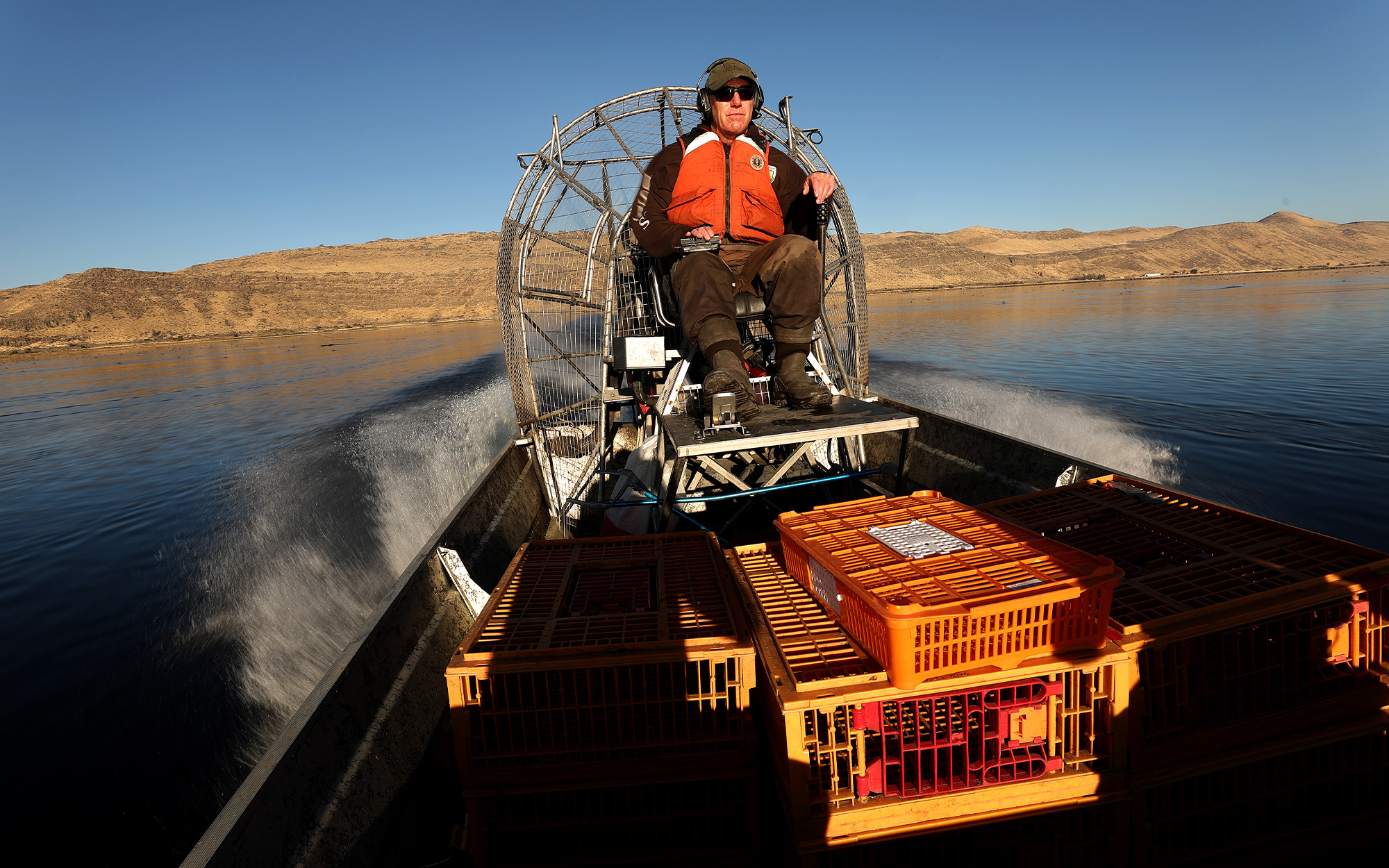U.S. Fish and Wildlife Service to Rehire Fired Employees with Backpay

On Wednesday a Congressman from Michigan’s Upper Peninsula took to Facebook to get answers around the mass layoffs at the U.S. Fish and Wildlife Service last month. Rep. Jack Bergman (R-Watersmeet) said he was worried about potential impacts to a critical sportfishing program in the Great Lakes that relies on USFWS employees to keep the fishery healthy.
“My office and I have heard from hundreds of [constituents] who are concerned about recent staffing reductions at the U.S. Fish and Wildlife Service and how that might impact the Great Lakes Fishery Commission’s sea lamprey control program,” Bergman wrote, echoing other concerns across the country regarding federal fish-and-wildlife programs that were handicapped or otherwise affected by the mass firings.
Those anxieties, along with answers to Bergman’s questions, were finally allayed yesterday, when the USFWS announced that all terminated probationary employees will be reinstated with back pay. This announcement follows a federal judge’s ruling earlier this month to curb the layoffs at six of the federal agencies, including the USFWS and the National Park Service, that fall under the Department of the Interior.
U.S. District Judge William Alsup said in early March that those layoffs were not only illegal, but “so aberrant in the history of the country” and so chaotic that they were likely to inflict “immediate, foreseeable harm” on our nation’s wildlife and their habitats. Alsup pointed to a mountain of evidence showing that many of the probationary employees had been wrongly terminated. And on March 13, he ordered the DOI to send out reinstatement offers to the more than 16,000 probationary employees that were laid off across the six affected agencies.
On Monday, the Trump Administration filed an appeal with the Supreme Court to halt Alsup’s decision, arguing that a federal judge cannot force the executive branch to rehire employees. That appeal was rejected Thursday by the 9th U.S. Circuit Court of Appeals, according to the Associated Press. The DOI issued a statement later that afternoon saying it would not only comply with Alsup’s order, but would pay employees for the work they missed over the last 40-plus days since they were fired.
Read Next: As Trump Attempts to Reform Federal Government, Hunters and Anglers Face ‘Unintended Consequences’
“The Department of the Interior remains committed to its mission of managing the nation’s resources and serving the American people while ensuring fiscal responsibility,” the DOI said in its statement to TV-6 News in Michigan. “In compliance with court orders, the Department of the Interior is reinstating probationary employees. All employees will receive backpay, and the Department will ensure continued compensation as the White House pursues its appeals process.”
Although other legal challenges around the mass firings are still working their way through the courts, the DOI’s announcement means the sea lamprey control program, along with other federal programs that benefit America’s fish and wildlife, should move forward this spring with adequate staffing.
“We all saw during COVID what happens when lamprey spraying efforts are delayed — unchecked spawning wreaks havoc on our Great Lakes fisheries,” Bergman wrote Wednesday, before he learned about the appeals court’s decision and the DOI’s subsequent announcement. “My team and I remain committed to finding a resolution to the situation that allows this essential work to continue without disruption.”
Bergman’s concerns over the Great Lakes lamprey program reflected the distress that’s been felt across the U.S. since Feb. 14, when more than 400 of the USFWS’ probationary employees were fired at once. Although “probationary” might sound like those employees were already on thin ice, this is a normal phase in the federal hiring process that all workers are subject to. These were either new hires or long-standing federal employees who were moved or promoted into new roles, and many of them represented the next generation of career public servants.
Read Next: This Former Game Warden Could Be the New USFWS Director. Here’s His Record on CWD, Wolves, and Grizzlies
The purge affected all levels of the federal agency, from the researchers working on black-footed ferret recovery to the wildlife refuge staff who manage critical waterfowl habitat and provide access for duck hunters. The National Wildlife Refuge Association called the mass firings a “direct attack on science-based conservation and the future of America’s wildlife,” while Steve Williams, a former USFWS director, called the sweeping cuts “a breathtaking level of incompetency” that will take years and maybe even decades to repair.
“This profession is arguably not even 100 years old, but we have a system in place that has restored wildlife throughout the country in a spectacular fashion,” Williams said in an interview with The Wildlife Society on March 14, referring to the critical conservation work that USFWS employees do. “This is shaking that entire system.”
Read the full article here

